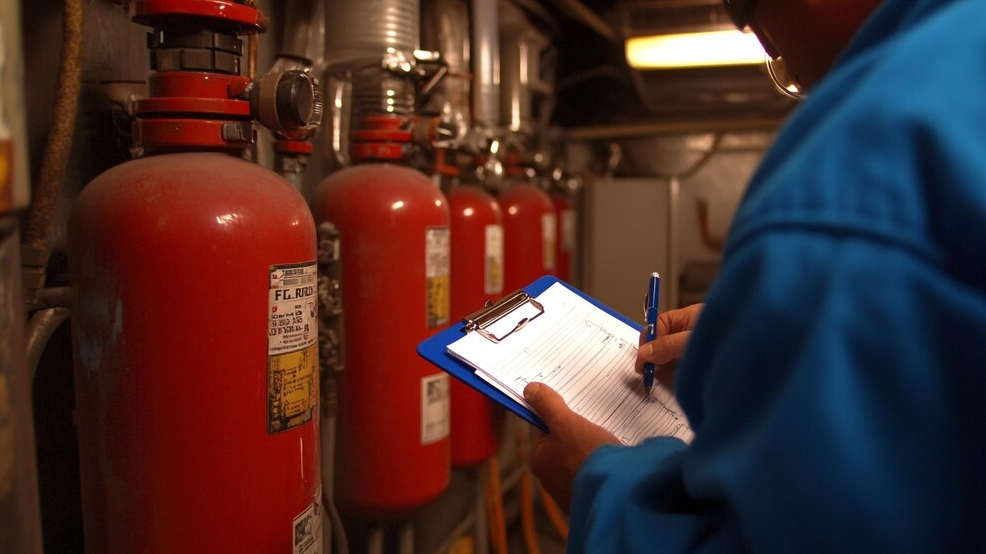Choosing the Right Fire Suppression System for Your Needs
Fire is one of the most destructive forces that can cause significant property damage, injuries, and even fatalities. Protecting your...

Fire is one of the most destructive forces that can cause significant property damage, injuries, and even fatalities. Protecting your assets, employees, and infrastructure from fire hazards is essential. A reliable fire suppression systems can minimize fire damage and ensure safety. However, choosing the right fire suppression system depends on several factors, including the type of facility, the materials present, and local fire safety regulations.
This comprehensive guide will help you understand various fire suppression systems, their applications, and how to choose the most suitable one for your needs.
Understanding Fire Suppression Systems
A fire suppression system is designed to detect, contain, and extinguish fires before they can spread and cause major damage. Unlike traditional fire extinguishers, which require manual operation, fire suppression systems work automatically. These systems use various suppression agents such as water, chemicals, gas, or foam to control and extinguish fires.
Types of Fire Suppression Systems
- Water-Based Fire Suppression Systems
- Sprinkler Systems
- Water Mist Systems
- Deluge Systems
- Gas-Based Fire Suppression Systems
- CO2 Fire Suppression
- FM-200 (Clean Agent Suppression)
- Inergen Gas Systems
- Foam-Based Fire Suppression Systems
- Aqueous Film-Forming Foam (AFFF)
- High-Expansion Foam Systems
- Chemical-Based Fire Suppression Systems
- Dry Chemical Suppression Systems
- Wet Chemical Suppression Systems
Water-Based Fire Suppression Systems
Water-based systems are among the most commonly used fire suppression solutions. They are highly effective in suppressing most fires, particularly those involving combustible materials such as wood, paper, and textiles.
Sprinkler Systems
Sprinkler systems are widely used in residential, commercial, and industrial settings. They are activated when the heat from a fire triggers the sprinkler heads, releasing water to suppress the fire.
Pros:
- Cost-effective
- Easy maintenance
- Effective for Class A fires (wood, paper, textiles)
Cons:
- Can cause water damage
- Ineffective for electrical and chemical fires
Water Mist Systems
Water mist systems use fine droplets of water to suppress fires by cooling the flames and displacing oxygen. They are ideal for data centers, museums, and healthcare facilities.
Pros:
- Less water usage compared to sprinklers
- Minimal water damage
Cons:
- Not suitable for large fires
Gas-Based Fire Suppression Systems
Gas-based fire suppression systems use inert gases or chemical agents to extinguish fires. They are primarily used in environments where water can cause damage, such as server rooms, data centers, and electrical equipment areas.
CO2 Fire Suppression Systems
Carbon dioxide (CO2) fire suppression systems displace oxygen to suffocate the fire. They are suitable for protecting electrical equipment and industrial machinery.
Pros:
- Leaves no residue
- Effective for electrical fires
Cons:
- Can be hazardous to human health
- Requires sealed environments for maximum effectiveness
FM-200 (Clean Agent Suppression)
FM-200 is a clean agent fire suppression system that quickly extinguishes fires without leaving any residue.
Pros:
- Safe for use in occupied spaces
- Non-corrosive and leaves no residue
Cons:
- Expensive installation costs
Inergen Gas Systems
Inergen systems use a blend of gases (nitrogen, argon, and CO2) to lower oxygen levels and extinguish fires without harming humans.
Pros:
- Safe for occupied areas
- Environmentally friendly
Cons:
- Requires storage space for gas cylinders
Foam-Based Fire Suppression Systems
Foam-based fire suppression systems are ideal for areas that store or process flammable liquids.
Aqueous Film-Forming Foam (AFFF)
AFFF is used to suppress fires involving flammable liquids by creating a film over the fuel surface, preventing oxygen from reaching the fire.
Pros:
- Effective against flammable liquid fires
- Rapid fire suppression
Cons:
- Requires specialized equipment
High-Expansion Foam Systems
These systems produce a large volume of foam to smother fires, making them ideal for warehouses, aircraft hangars, and storage facilities.
Pros:
- Covers large areas quickly
- Effective for confined spaces
Cons:
- High initial installation cost
Chemical-Based Fire Suppression Systems
Chemical-based systems are designed for specific fire risks, such as kitchens, chemical storage areas, and laboratories.
Dry Chemical Suppression Systems
Dry chemical systems use a fine powder to smother fires and prevent re-ignition. These are commonly used in industrial and vehicle fire suppression.
Pros:
- Effective against Class A, B, and C fires
- Cost-effective
Cons:
- Leaves residue that requires cleanup
Wet Chemical Suppression Systems
Wet chemical suppression is primarily used in commercial kitchens to extinguish grease fires by cooling and forming a protective layer.
Pros:
- Specifically designed for cooking fires
- Prevents fire re-ignition
Cons:
- Requires maintenance and refilling
How to Choose the Right Fire Suppression System
When selecting a fire suppression system, consider the following factors:
1. Type of Facility
The environment plays a crucial role in determining the appropriate fire suppression system. For example:
- Data Centers & Server Rooms: Gas-based systems (FM-200, Inergen)
- Warehouses & Storage Facilities: Sprinkler or high-expansion foam systems
- Commercial Kitchens: Wet chemical systems
- Manufacturing Plants: Dry chemical or CO2 systems
2. Fire Hazards Present
Identify potential fire hazards in your facility. Flammable liquids require foam-based systems, while electrical fires need gas-based solutions.
3. Compliance with Regulations
Ensure the system meets local and international fire safety regulations (NFPA, OSHA, ISO standards).
4. Budget & Maintenance Costs
Some systems, such as gas-based suppression, have high upfront costs but minimal cleanup, while sprinkler systems are more affordable but may cause water damage.
5. Occupancy Considerations
If the area is frequently occupied, choose a system that is safe for humans, such as FM-200 or Inergen gas.
Conclusion
Selecting the right fire suppression systems is essential for protecting lives and property. Each system has its advantages and is suited for specific applications. By considering the nature of your facility, potential fire hazards, compliance regulations, and budget, you can make an informed decision.
Investing in a reliable fire suppression system ensures long-term safety and minimizes the risk of fire-related damages. Always consult with fire protection experts to determine the best system for your needs.



